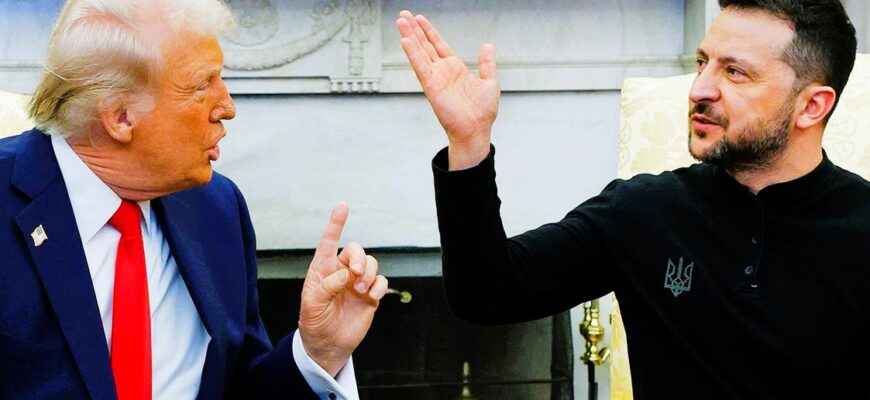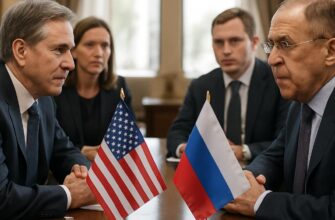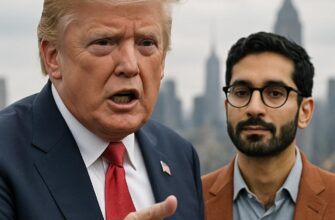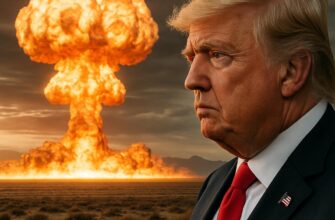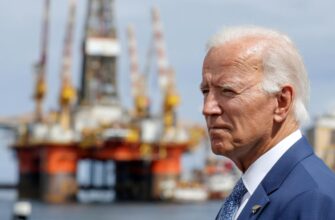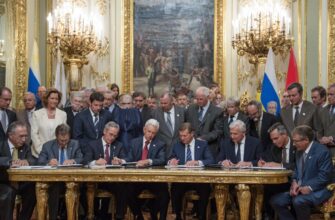On February 28, 2025, U.S. President Donald Trump hosted Ukrainian President Volodymyr Zelensky at the White House, a meeting that promised progress but ended in a dramatic fallout. This encounter, watched closely around the globe, was meant to address critical issues like Ukraine’s mineral resources and the war with Russia. Instead, it exposed stark differences between the two leaders. Journalists at TheMors have pieced together what happened, why it went wrong, and what’s at stake for both nations moving forward. Here’s a detailed look at this tense moment in international relations.
The Road to the February Meeting
The history between Trump and Zelensky has always been bumpy. Their 2019 phone call triggered Trump’s first impeachment when he was accused of pushing Ukraine to investigate a political rival. Now, in 2025, Trump is back as president, and Zelensky is navigating a nation battered by Russia’s invasion since 2022. The February 28 talks aimed to tackle two pressing matters: a deal giving the U.S. access to Ukraine’s rare earth minerals and a plan to halt the ongoing conflict.
Trump framed the mineral pact as a way to recoup some of the $183 billion in aid the U.S. has poured into Ukraine. Zelensky, however, insisted on ironclad security promises before handing over anything. In the weeks leading up, Trump took jabs at Zelensky, labeling him an “unelected leader,” while Zelensky hit back, accusing Trump of echoing Kremlin talking points by cutting Ukraine out of peace talks in Saudi Arabia. The buildup hinted at trouble ahead.
Inside the Oval Office Showdown
The meeting kicked off with high hopes but unraveled fast. Trump and Zelensky were supposed to finalize the mineral agreement and align on a strategy to end the war. Within minutes, though, the tone shifted. Trump, alongside Vice President J.D. Vance, pressed Zelensky to acknowledge America’s generosity, suggesting he had little leverage. Zelensky responded sharply, “I didn’t come here for a game,” emphasizing the life-or-death stakes for Ukraine.
Where They Locked Horns
- Mineral Rights: Trump demanded a swift deal to tap Ukraine’s resources. Zelensky balked, saying he wouldn’t trade his country’s future without firm U.S. backing.
- Ending the War: Trump touted a rapid truce, boasting he could negotiate with Putin directly. Zelensky argued that past Russian breaches made this a gamble without solid assurances.
- Respect on the Table: Trump and Vance wanted gratitude; Zelensky sought partnership, refusing to bend under pressure.
The exchange lasted barely 10 minutes before Trump called it quits, asking Zelensky to leave. Plans for a joint press event were shelved, and no signatures hit the table. Trump later vented on Truth Social: “Zelensky’s not serious about peace while we’re footing the bill. He knows where to find me when he’s ready.”
How the World Responded
The breakdown sparked a flurry of reactions. Trump kept up his critique, painting Zelensky as ungrateful and a barrier to peace. Zelensky, posting on X, thanked Americans for their support but stood firm, later telling Fox News he valued candor over posturing.
U.S. Voices Weigh In
In the U.S., the divide was predictable. Republicans like Senator Mike Lee cheered Trump’s tough stance, saying it prioritized American interests. Democrats and a few GOP figures, such as Representative Mike Lawler, labeled it a diplomatic misstep, warning it gave Russia an edge.
Europe’s Take
Across the Atlantic, leaders backed Zelensky. Poland’s Prime Minister Donald Tusk declared, “Ukraine has our support.” The UK and France began sketching out a European peace initiative, and Zelensky’s March 2 trip to London showed Europe’s willingness to step up as U.S. commitment wavered.
Why It All Fell Apart
The collapse wasn’t a surprise to close observers. Trump wanted a headline-worthy win to reinforce his “fixer” reputation, while Zelensky needed guarantees to protect Ukraine’s sovereignty. Their approaches—Trump’s deal-driven bluntness versus Zelensky’s wartime tenacity—were oil and water. Add to that a lack of prep work, with no shared agenda in place, and the meeting was doomed to devolve into a standoff.
The Path Ahead for Both Nations
This failure leaves Ukraine in a bind. Trump’s March 3 hint at pausing aid—calling it a “rethink”—puts pressure on Zelensky to rethink his stance. Europe might pick up some slack; talks in London suggest a stronger EU role, though matching U.S. firepower is a tall order.
For Trump, it’s a hit to his promise of ending the war overnight, a pledge from his 2024 campaign. Leaning harder into talks with Putin could strain ties with NATO and his own party, but a second shot with Zelensky isn’t impossible if concessions emerge. The next moves will shape both leaders’ legacies.
What Could Happen Next
- Another Try: Zelensky might soften his position to keep U.S. aid alive.
- U.S. Pullback: Trump could shift focus to Russia, sidelining Ukraine.
- European Lead: The EU and NATO might take charge, reducing America’s role.
FAQ: Your Questions Answered
TheMors journalists tackle the basics:
- When was the meeting? February 28, 2025, at the White House.
- What caused the rift? Disputes over minerals, war plans, and mutual frustration.
- Is U.S. aid stopping? Trump’s paused it but hasn’t ruled out more talks.
- What’s Ukraine doing? Zelensky’s turning to Europe while holding his ground.
Conclusion: A Stalemate with Big Stakes
The February 28, 2025, clash between Trump and Zelensky was less a negotiation and more a test of wills. Trump aimed to lock in a deal; Zelensky fought for his nation’s survival. Neither walked away satisfied, leaving the door open for Russia to gain ground. The story’s far from over—watch for shifts in the weeks ahead.
At TheMors, we’re committed to keeping you updated. Curious about the Trump-Zelensky saga or other big stories? Swing by TheMors – Breaking News for fresh takes and in-depth reports. Dive in, stay informed, and let us know what you think!

